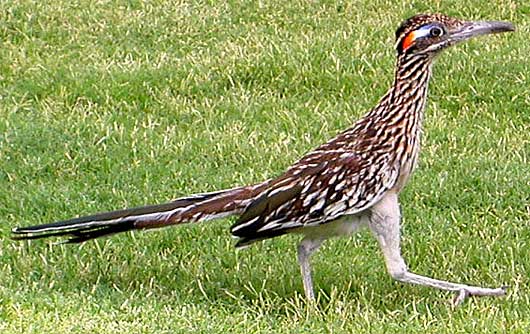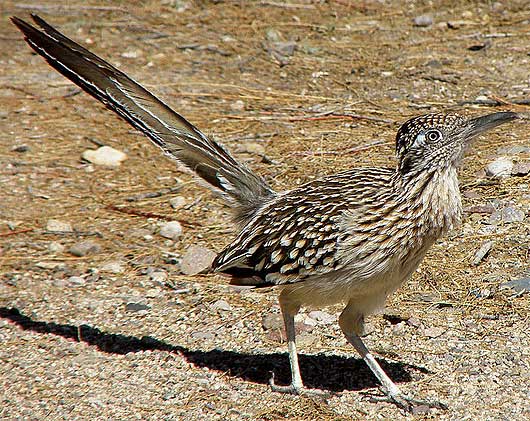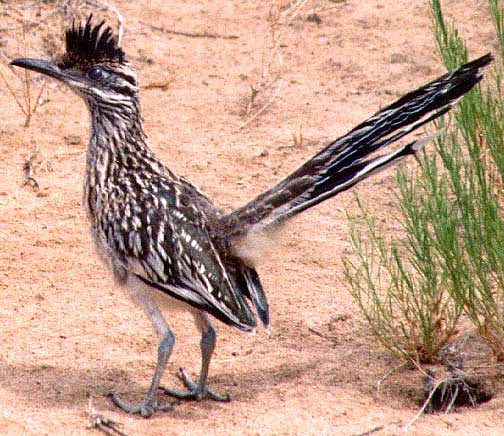Roadrunner – Fine Running Legs

Greater roadrunner
There are two species of roadrunner within the Geococcyx genus. This group includes all cuckoo birds and the two species of roadrunner: the greater and the lesser roadrunner. They are both indigenous to Central America and Mexico.

Lesser roadrunner
The long-legged birds vary in size from 18 inches (46 cm) to 24 inches (61 cm). The feathers are black-brown with white streaks and they have a very distinctive head crest. Along with the especially long legs they also have powerful feet and an oversized bill. The tail is white tipped and broad with three outer tail feathers. The lesser roadrunner is slightly smaller than the greater and has fewer streaks in its feathers.

The roadrunner is a terrestrial bird meaning it rarely flies. It has comparatively short wings in comparison to the size of its body. It has particularly interesting feet, as do all cuckoo birds, as it has two toes at the front and two toes at the back of its feet. Their name comes from the fact that they are super speedy runners and can run at speeds of up to 20 mph (32 km/h) as they prefer to run than fly. When they do fly it is more of a last resort and usually to escape predators.

The roadrunner is an omnivorous and opportunistic species. They mainly eat insects including grasshoppers, beetles and crickets although if given the chance they’ll also eat small lizards, snakes, eggs, rodents and small mammals. Other birds who spot the roadrunners near their nests will often attack to defend their nests. Their hunting method is based upon their fantastic running speed as they hide in the bushes and then chase after their prey. Occasionally they will leap and jump to catch insects.

Roadrunners are usually solitary but sometimes live in pairs. They keep the same mate for their entire life and share parental duties during the incubation period and with the hatchlings. When the hatchlings are 2-3 weeks old they leave the nest and for a few days they forage alongside their parents.
Another interesting fact about the roadrunner is its ability to lower its own body temperature. During the cold desert night it can lower its temperature to conserve its energy. To reheat itself in the day time, it exposes its darker patches of skin on its back to the sun.
